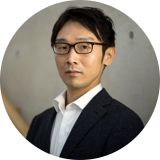SEA PROJECT Symposium
How has Japan Engaged with Contemporary Art in Southeast Asia? Abstract of Presentations

Deputy Director Yusuke Minami (National Art Center, Tokyo) introducing the SEA Project

The former curator of the Fukuoka Art Museum and later the Fukuoka Asian Art Museum, Prof. Ushiroshoji spoke about each of the museum’s engagements with regards to Asian art. He began with the Asian Artists Exhibition Part 1 (1979), the predecessor to the Fukuoka Asian Art Triennales, explaining that, back in the day, while access to information was limited, even information itself on Asian art was scarce. Instead of the Japanese museum curators taking the lead, this resulted in their reliance and dependence on curators and artists of Southeast Asia for the research and exhibition-making. Subsequently, the exhibition itself frequently turned out to be――to borrow the presenter’s words――more of an “up-to-you (anata-makase) ” type of show. As Asian art exhibitions continued to be held later into the 1990s, Prof. Ushiroshoji pointed out that there was a rising trend for artists to capture and incorporate, into their works, socio-political issues and problems which were more immediate to them, extending to the discussion that installation and performance art gradually but steadily spread during that time. He ended by stating that, through organizing exhibitions on Asian art, he was able to continuously keep in mind the attitude of (1) distancing himself from art as a Euro-centric discourse, and (2) reflecting on the function(s) or role(s) of a museum [within the larger, social context] .
Ms. Furuichi Yasuko chronologically surveyed the projects the Japan Foundation’s ASEAN Cultural Center (1990–1995), Asia Center (1995–2004), and the renewed Asia Center (2014–) had carried out over the decades. Set up as a special legal entity under the supervision of the Foreign Ministry in 1972 and restructured as an independent administrative institution in 2003, the Japan Foundation has pursued many cultural exchange programs as exemplified by the many projects carried out by the three Centers. Currently, the Asia Center’s projects in the arts are designed to (1) encourage the Japanese audiences’ understanding of Asian art, (2) build and strengthen professional networks within the Asian regions, (3) contribute to the discourse of Asian art through symposiums with the aid of scholars and critics, and (4) introduce Japanese contemporary art to Southeast Asia. The format and structures of the exhibitions are diverse ranging from solo, thematic, country-based, and to region-based exhibitions. However, what is worth noting is the fact that many of the exhibitions organized and/or supported by the Asia Center are co-curated, and it is through this collaborative process that comradery among Japanese and other Asian curators develop.
Showing clips on the screen for the audience, Mr. Shimoda introduced to us his performance projects he had continued over the years and across the globe. Having started his career in performance art in the late 1970s, Mr. Shimoda set up the Nippon International Performance Art Festival [NIPAF] in 1993, and later begun NIPAF Asia in 1996, which, either directly or indirectly, had greatly influenced performance artists in the Southeast Asian region. Introducing examples of Tran Luong’s performances in Hanoi, Vietnam, and his own performance workshops in Yangon, Myanmar, he stated that one of the important reasons that artists reacted positively to performance art is the absence of a physical object (i.e. the artwork) and, thus, its ability to slip past the ever-encroaching reaches of censorship.
All of the three presentations, I think, touched upon issues that resonate with those inherent in the SEA Project, and, thus, the three also seemed to hint or point to us factors or methods we have to revise in carrying out the project. The lack of resource on contemporary Southeast Asian art, as Prof. Ushiroshoji mentioned, is due to accessibility and linguistic difficulties. Although the SEA Project is a collaboration among Southeast Asian and Japanese curators, these still remain as obstacles for us; an obstacle which we are nevertheless trying to overcome.
Seen from a larger perspective, alongside Fukuoka, museums in Singapore and Australia have actively organized exhibitions on contemporary Southeast Asian art since the 1990s. More recently, American and European museums have also widen their interests to introduce Southeast Asian art, examples of which are No Country: Contemporary Art for South and Southeast Asia (Solomon R. Guggenheim Museum, New York, 2013), Secret Archipelago (Palais de Tokyo, Paris, 2015), and Open Sea: Artists from Singapore and South East Asia (Lyon Museum Contemporary Art, Lyon, 2015).
Performance art, as Mr. Shimoda stated, is a popular means for artists in particular Southeast Asian regions since it does not leave material trace(s) or evidence, but, I assume, performance art’s popularity is also fired by the fact of there being very few exhibition spaces or white cubes in Southeast Asia. To expand the discussion outside of Southeast Asia, rather than it being seen as simply another version of institutional critique against museums and galleries, it could be said that the worldwide tendency to re-evaluate artistic expressions that use the body――performance art, socially engaged art, and activist art――may be demonstrating the unquestionable fact that these forms of expressions, in fact, currently exemplify another path within the realm of contemporary art.
Translator: Meiko Sano (The Japan Foundation Asia Center)
Editor: Juri Murakami (in between) , Meiko Sano
Photo: Shinichiro Mikuriya
Photo Courtesy: Mori Art Museum, Tokyo
